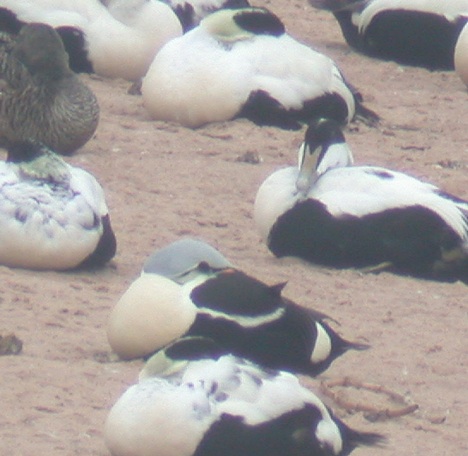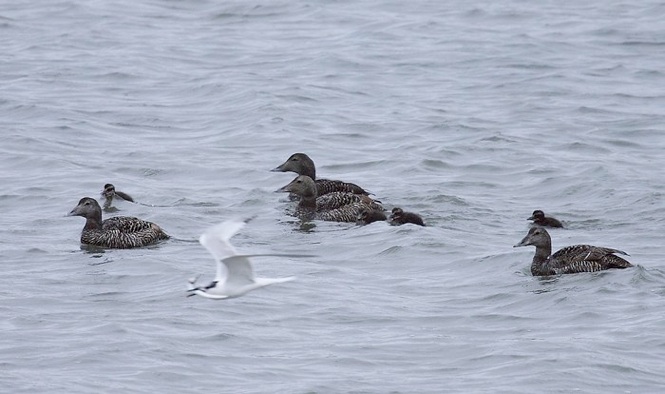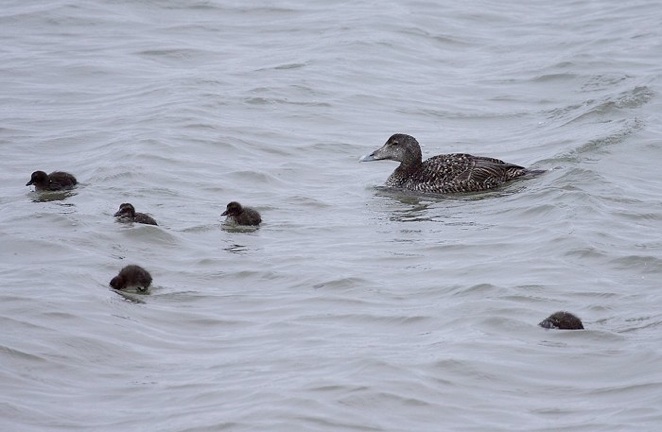Jun 182011
An immature drake American White-winged Scoter was amazingly discovered by local birders amongst a huge flock of moulting scoter at Blackdog, Aberdeen on 11th June 2011.
This was a first record for Britain of this scoter species and not surprisingly, it took the local birders some time to clinch the ID. Reading various reports on websites, this bird seemed – a) extremely difficult to find, amongst some 1200+ Common Scoter & 2000+ Common Eider – b) it would be viewed at some distance and c) it would be a very tricky identification process. All this on top of a round trip of some 1000miles.
During the week of 13th June it was a case of waiting until the weekend, even then we were in two minds whether to face the long drive and go for it. Well we left on Saturday 17th June at 5am and eventually arrived on site at around 1pm. The weather to say the least was horrendous. Driving rain, grey skies, low cloud, rough seas. How on earth were we going to find the bird in this. I must confess I was at a low ebb, absolutely wet through after walking the one and a half miles to the site and no sign of the weather changing. It was really grim!!
Suddenly, the skies cleared and the rain stopped and we were at last able to look through the huge flock of sea duck. We soon located a drake Surf Scoter and small numbers of Velvet Scoter. Then the rain hit again and viewing was restricted. After a further 20 minutes or so, the weather improved and at around 14:50, four Velvet Scoter flew in low across the sea and landed closer, still around some 400 yards or so offshore. One of the birds amongst the group of Velvet Scoter looked totally different and we had suddenly realised that this was our bird. A state of euphoria hit us and the rest of the 30 or so birders congregated.
We were looking at the immature White-winged Scoter, absolutely unbelievable. It was possible to see the distinctive pinkish-grey tip to the bill, with the grey-pink colour seemingly extending along the bill edge, the peculiar “bulbous” bulge at the base of the bill, which gave the whole head shape a distinctive appearance. The bird seemed to hold its head forward and the head shape appeared to be very triangular. The bird had dark upper parts contrasting noticeably with paler brown lower parts, especially the flanks. Viewing this bird was extremely difficult in the heavy swell of the sea. Some birders were struggling like crazy to get on the bird. Eventually it melted away into the flock and we lost it from view. My only disappointment was not being able to get a digi-shot of the bird. Quite honestly it was impossible in the conditions. We also had 6 Arctic Skua; a Bonxie; a Puffin; numerous Red-throated Diver, Kittiwake, Gannet, Guillemot, Razorbill, Sandwich Tern & Arctic Tern.
I was also glad that I had taken some prints of pictures that had been posted on the internet. These were invaluable in helping us to be sure that we were in fact watching the star bird!!
A quick visit to the Ythan Estuary for the drake King Eider and we were on our way home.
The year List moves on to 221. Another lifer no less, I may get to 500 quicker than I thought!!
Images below – Drake King Eider roosting at the traditional Ythan Estuary gathering – family parties of Common Eider.




